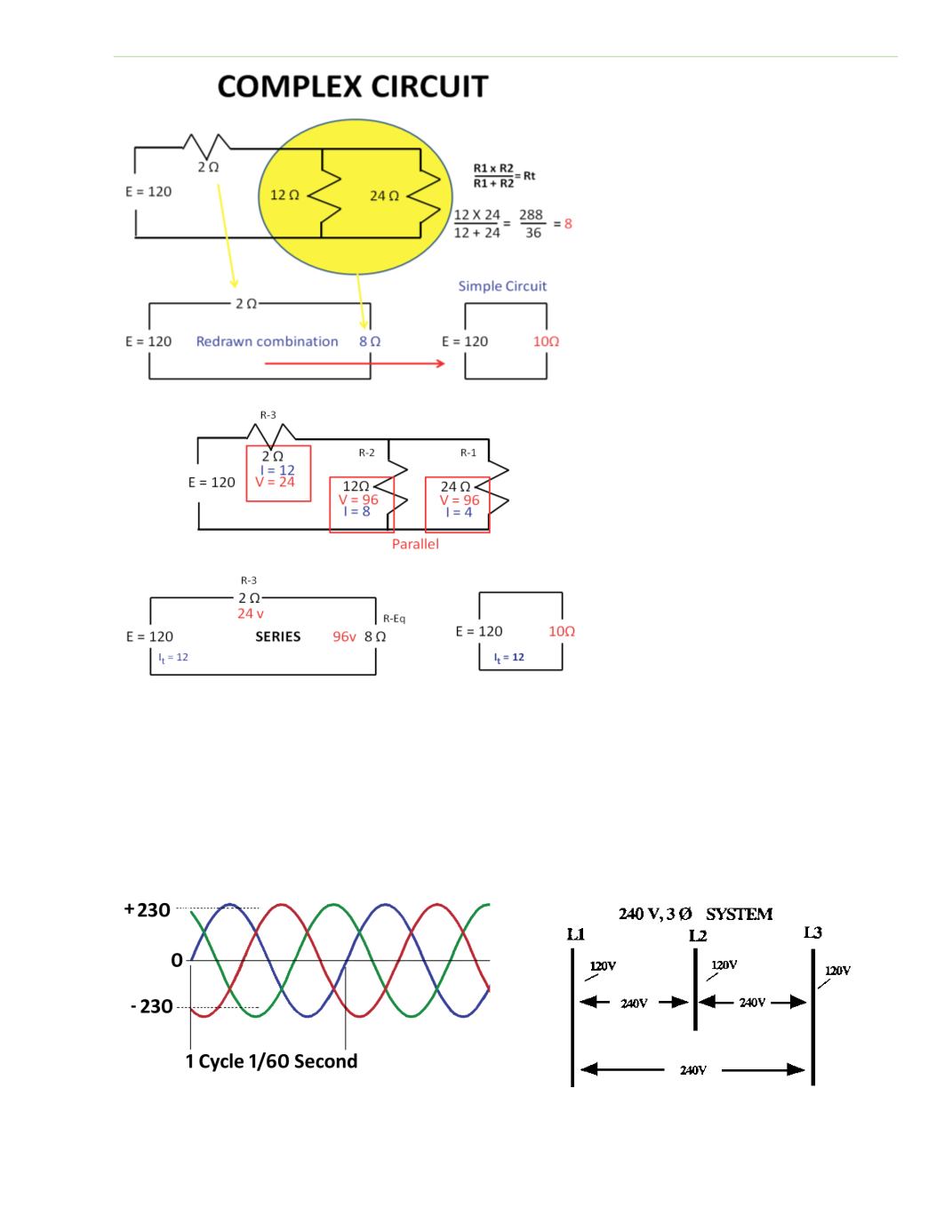

Electrical Theory & Applications for HVACR
Chapter 2: Circuits and Their Components
Page 21
A potenƟal difference exists between any two hot wires because their polarity is different. Each hot
wire has the same voltage, but different polarity. Electrons flow according to polarity, from negaƟve
to posiƟve. Therefore, the potenƟal between any two hot wires is addiƟve, because 120 volts
(negaƟve) plus 120 volts (posiƟve) equals 240 volts. One wire is “pushing” while another is “pulling”
with equal force. This is called alternaƟng current (AC) because the hot wires are alternaƟng between
posiƟve and negaƟve at a rate of 7,200 Ɵmes per minute, or 60 cycles. The electrons are simply
changing the polarity. A voltage tester reads the effecƟve voltage of the two wires; this is called the
root mean square (rms). See Figure 2‐4a.
Fig. 2‐3: Complex circuit broken down
to its simplest form
Fig. 2‐4a: 3‐phase sign wave, each leg 120°
apart
Fig. 2‐4b: Voltage between any two wires is addiƟve
because polarity is different
TO
GROUND










